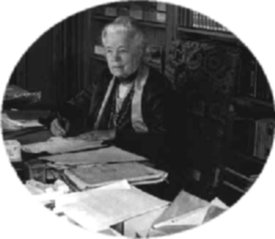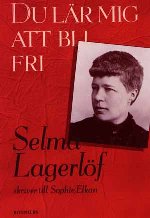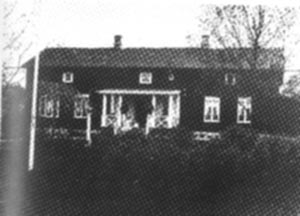(1858-1940)

Even though the novel of Gösta Berling had the word story on the cover, and Nils Holgersson existed in a childrens' book (and a schoolbook at that) their creator has mainly written for an adult audience, and portrayed people and problems of a general interest. As a psychologist she has been able to in a remarkable way enter into and understand the problems of the mentally ill - Gunnar Hede in En herrgårdssägen and Jan in Kejsaren av Portugallien testify thereof. Social, political, and religious problems often reoccur in her work, even if she more rarely actually got involved in the current debates - when she did, it was usually the peace issue and the fight for equal rights for women. Selma Lagerlöf - den förargelseväckande was the title a famous ? used for a book about her. Since the ? no longer ?s, there is somuch more to rejoice at, and perhaps rediscover in her work - one mustn't forget that she is the most genuine storyteller in Swedish literature, spanning from the grand and powerful in the dalaepic Jerusalem, to the delicately enchanting in Charlotte Löwensköld. All in all, Selma Lagerlöf wrote 23 books, and several of them have been filmed. A personal portrait of Selma Lagerlöf is painted in the newly released collection of letters, Du lär mig att bli fri (You teach me how to be free).

Selma Lagerlöf recieved Svenska Akademiens big goldmedal in 1904, and the Nobel Prize in1909. She was a member (the first woman) of Svenska Akademien from the year 1914.
![]()

Mårbacka is where Selma Lagerlöf
was born in 1858, and that is where she lived during her younger years,
until she left in 1882 to learn as a teacher in Stockholm. After her father's
death a few years later, the estate had to be sold, and left the family.
However, Selma managed to, after the enormous literary success with Gösta
Berlings saga,
Jerusalem, Nils Holgerssons Underbara resa
and
others, finally buy the estate back, and from 1907 that is where
she spent her summers. The mainbuilding was in those days still the red
one-story house from the end of the 18th century, in which she and her
parents had resided. After a few years, Selma Lagerlöf decided to
completely rebuild it, and 1921-23 the present building appeared, after
blueprints by G Clason. In this new home, the authoress lived until her
death in 1940. According to Selma Lagerlöf's will, the memorial estate
is owned and proprietered by a.
Guided tours from May until the beginning
of September all days of the week. During
the rest of the year only reservations.
Public tours every day at 14:00.
Café, souvenirs, books, exhibit.
Telphn nr +046 563 310 27
![]()